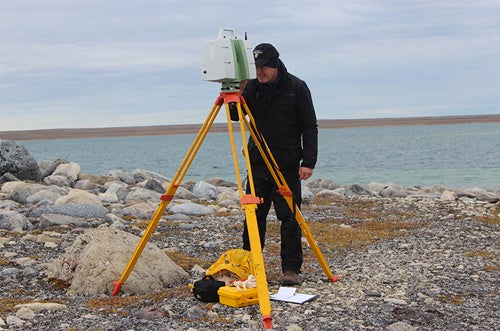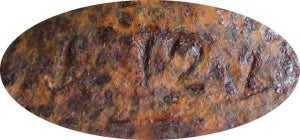
Waterloo profs play key role in discovery of Franklin shipwreck
Archaeologists helped find artifacts that pointed underwater search to Franklin Expedition shipwreck

Archaeologists helped find artifacts that pointed underwater search to Franklin Expedition shipwreck
By Wendy Philpott Faculty of ArtsTwo Waterloo archaeology professors were surveying an uncharted island in the High Arctic on September 1, when artifacts were found that led to the historic discovery of one of Sir John Franklin’s 19th century ill-fated ships.
Since 2008 Robert Park, a professor in the Department of Anthropology, has been assisting Douglas Stenton, Director of Heritage for the Government of Nunavut, surveying Arctic islands for human habitation and migration patterns, including researching remains of the fabled Franklin Expedition.
Park and Stenton, who is also an adjunct Waterloo professor, catalogue sites, map and analyze locations of found relics, as well as assess threats of climate change to the terrain and its history.
Found artifact indicated ship nearby
On Sept. 1, the two archaeologists set off by helicopter on one of their daily trips from the CCGS Sir Wilfrid Laurier research vessel, to survey yet another Arctic island. On that particular day, the island was selected by Stenton who, along with Park, were accompanied by pilot Andrew Stirling and hydrographer Scott Youngblut.

Dr. Robert Park working with the LiDAR mapping system in Douglas Bay, Nunavut. Photo credit: Douglas Stenton, Government of Nunavut
It was Stirling who first spotted a large iron object on the beach, and called Park and Stenton over. They were immediately intrigued, especially when they made out the British Royal Navy’s stamp in the rusted metal.
“We were very pleased,” says Park of the moment they recognized the significance of what they’d found. “This was the very first time we had found an artifact on shore that seemed to indicate that one of the ships had been nearby after having been abandoned.”

A close-up reveals the Royal Navy broad arrows stamped at the base of the davit heel. The number 12 is also visible. Photo credit: Douglas Stenton, Government of Nunavut
According to Inuit oral testimony recorded in the 1870s, explains Park, the Franklin ship had drifted into that general region of the Arctic and had then sunk after a year in the ice.
The discovery of the iron piece, along with a wooden artifact, also thought to come from a ship, led to renewed underwater sonar searching in the vicinity and the historic discovery this week of one of the two Franklin Expedition ships that disappeared 166 years ago.

Read more
New research from the University of Waterloo centres Haudenosaunee-led efforts in the repatriation and reclamation of cultural and intellectual property

Read more
Researchers awarded funding to investigate ecology, climate change, repatriation, health and well-being through cultural and historical lens

Read more
New Canada Research Chairs will tackle future-focused problems from social robots and intergroup attitudes to geochemistry and nanoscale devices
The University of Waterloo acknowledges that much of our work takes place on the traditional territory of the Neutral, Anishinaabeg, and Haudenosaunee peoples. Our main campus is situated on the Haldimand Tract, the land granted to the Six Nations that includes six miles on each side of the Grand River. Our active work toward reconciliation takes place across our campuses through research, learning, teaching, and community building, and is co-ordinated within the Office of Indigenous Relations.